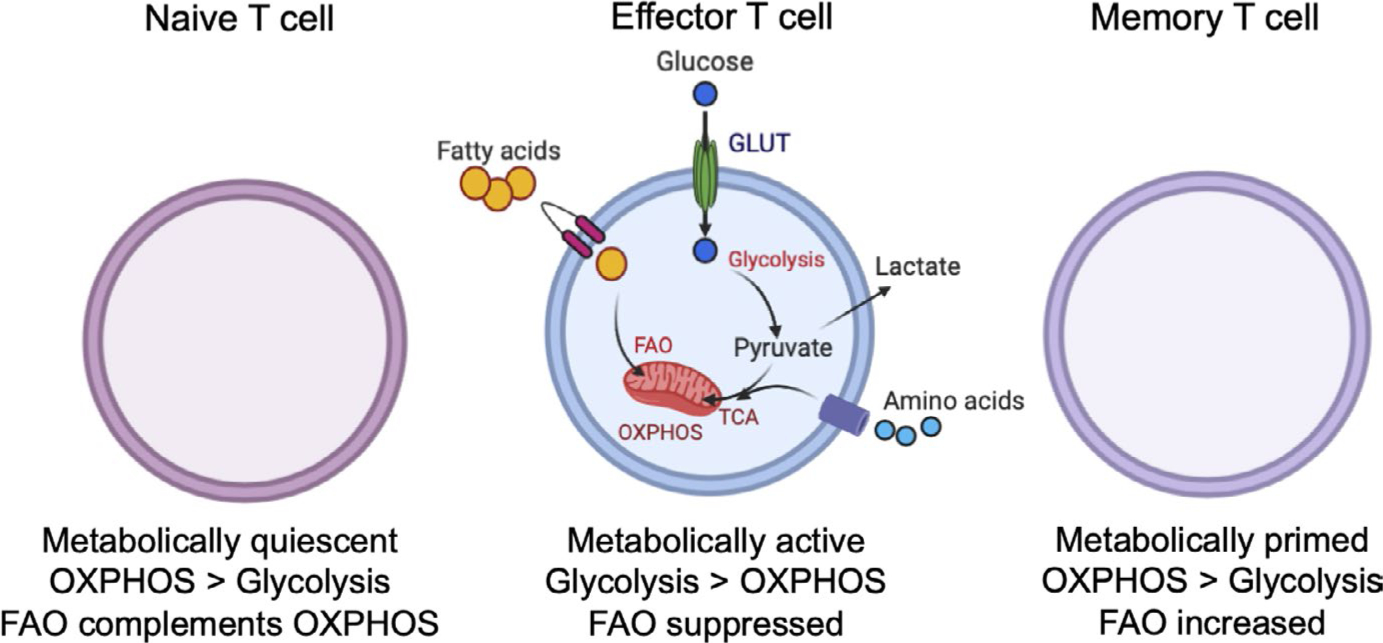FIGURE 1.

T cell metabolic profiles change with activation status. Naive T cells are metabolically quiescent and tend to use mitochondrial oxidative phosphorylation (OXPHOS) to a greater extent than glycolysis. Following activation, effector T cells exhibit greater metabolic activity, which is supported by increased uptake of glucose and fatty acids through glucose transporters (GLUTs) and fatty acid transporters, respectively. Effector T cells tend to use aerobic glycolysis to a greater extent than OXPHOS. Memory T cells are metabolically primed and ready to respond rapidly to antigen encounter; these cells tend to rely more heavily on fatty acid oxidation to fuel metabolic demands. Figure created using BioRender
